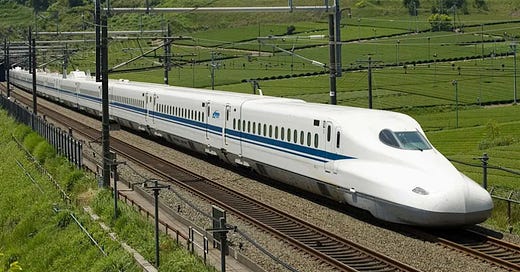The Keys to Great High-Speed Rail
The Five Essential Principles for Building Successful High-Speed Rail Systems
Not to sound like Old Rose from Titanic, but it’s been 52 years since we first saw train technology capable of reaching speeds of 178 mph, courtesy of Japan’s Shinkansen. Fast forward to today, and the Acela—our country’s only so-called “fast” train—doesn’t even qualify as high-speed rail by international standards. Meanwhile, in one of the U.S.’s faste…
Keep reading with a 7-day free trial
Subscribe to The Transit Guy to keep reading this post and get 7 days of free access to the full post archives.




